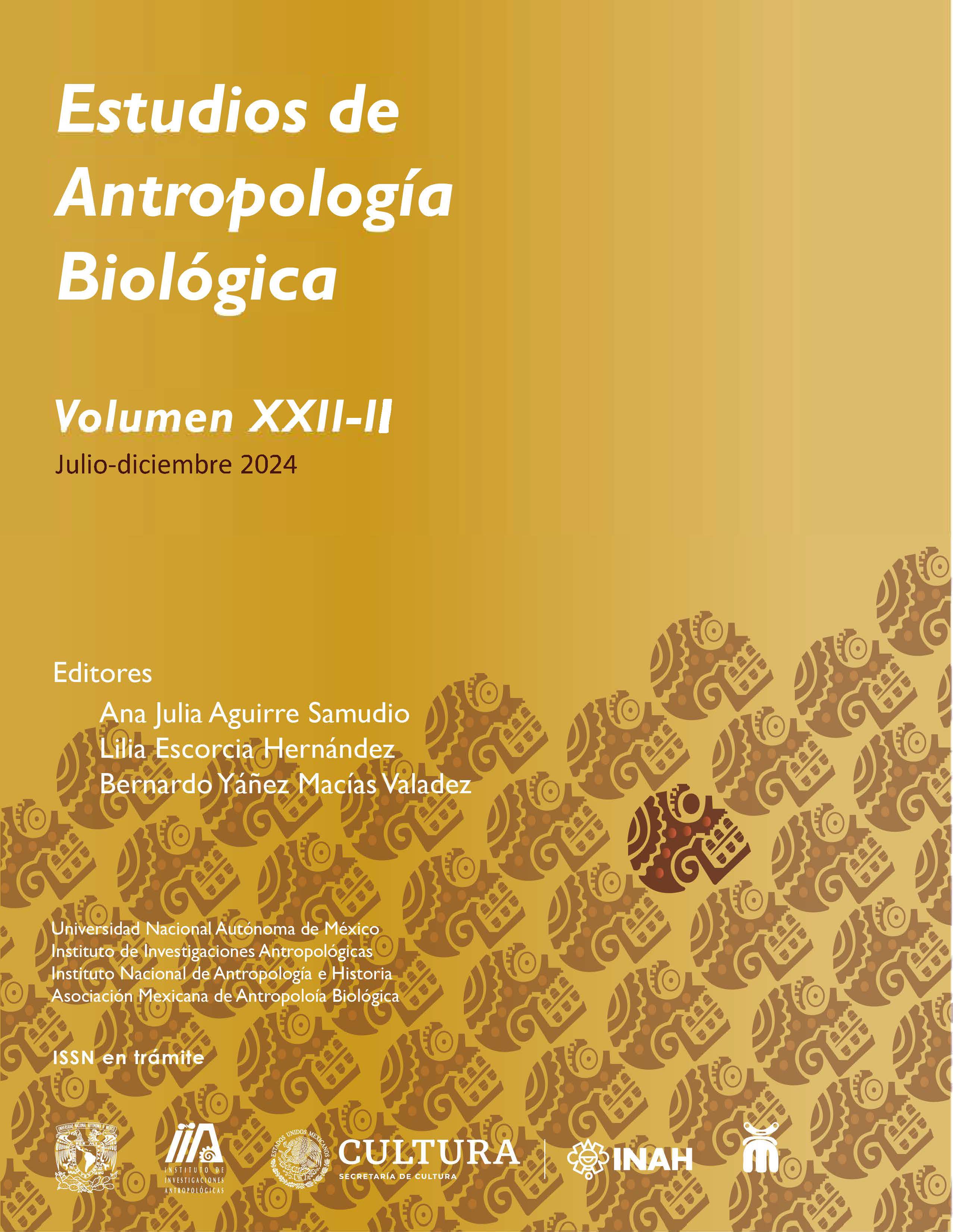Hipoplasia localizada del canino primario. Casos de estudio en niños menores de cinco años de Monte Albán durante el Clásico (200-700 dC)
DOI:
https://doi.org/10.22201/iia.14055066p.2024.89349Resumen
La presente investigación tuvo como objetivo principal identificar los defectos del esmalte en dentición decidual y su posible etiología en niños menores de cinco años inhumados en las unidades habitacionales de Monte Albán durante el clásico (200-700/750 dC). Se realizó una observación macroscópica de los dientes deciduales, se identificó hipoplasia localizada del canino decidual, su grado fue determinado según la metodología de Lukacs et al. (2001a). Se analizaron 70 entierros de menores de cinco años, no todos conservaron los caninos; sólo 34 niños tuvieron al menos un canino primario para su evaluación. Se identificó la lesión en siete niños (20 %). En cuanto a los caninos, en total fueron 91; de éstos, ocho tuvieron el defecto, lo que representa el 8.7 %. Las probables causas de la lesión fue la deficiencia de vitamina A y una dieta baja en grasas en los niños. La alimentación exclusiva de maíz en la mayoría de la población tuvo repercusiones en las mujeres embarazadas y con recién nacidos. Esto no quiere decir que toda la población de Monte Albán tuviera deficiencias nutricionales, sólo algunos desarrollaron el defecto en el esmalte, lo que implica una susceptibilidad individual al padecimiento.
Descargas
Descargas
Publicado
Cómo citar
Número
Sección
Licencia

http://creativecommons.org/licenses/by-nc-nd/4.0/


